Happy belated New Year! For the first time in a long time, bringing in the New Year was not something that excited me. Admittedly, I fell asleep before the clock hit midnight on the east coast and January 1, 2021, felt like just another day. It felt good that 2020 finally came to an end, but as I reflected on the year that ended and considered the year ahead, not much has changed. That said, I am excited to announce the birth of my first biological nibbling: my sister gave birth to a healthy baby girl, Hannah, on December 30, 2020. The birth of this baby came two weeks ahead of schedule and is a silver lining on what was otherwise a year that I am desperate to forget.
A year ago, I ushered in 2020 by presenting a column for Comic Book Daily that focused on the beginnings of the Canadian Silver Age and whether the earliest comics from the era were giveaways published by Ganes Productions or the anti-Semitic series The Story of Funny Money created by a wannabee Nazi. After last month’s discussion of the era of national distribution from the late 1970s through the late 1980s that finally brought Canadian comics the exposure they deserved on a larger state for the first time since the end of the Golden Age, it seems apropos that my next two columns will focus on the end of the era that I have been researching and writing about for several years.
Last month, I highlighted several of the starts and stops from the mid-to-late 1970s that set the stage for what would come during the 1980s and focused the majority of my column on the two biggest companies from the era: Aardvark-Vanaheim and Vortex. Both companies survived the end of the Canadian Silver Age, with Aardvark-Vanaheim still publishing Dave Sim’s work today. Vortex, on the other hand, only held on for a few more years before finally shuttering in 1994.
I had originally intended to focus on what I consider to be the other “big three” Canadian publishers from the 1980s in this column, but I found that trying to cram all of the information into one column would not do justice to the topic. As such, today I will focus on the other Canadian company that published a breadth of material during the 1980s: Aircel. As a result, I will defer my discussion of Matrix Graphic Series and Strawberry Jam to February. Matrix Graphic Series and Strawberry Jam published fair fewer comics than Aardvark-Vanaheim, Vortex or Aircel, but continue to impact the comics industry in Canada today, which is why I want to give these companies more attention than would be possible if I were to include them in this month’s edition of Forgotten Silver.
After Aardvark-Vanaheim and Vortex, Aircel was the third-largest publisher of comic books in Canada during the 1980s. The company survived the Silver Age, albeit briefly and in name only. I will return to this shortly. Let’s get started.
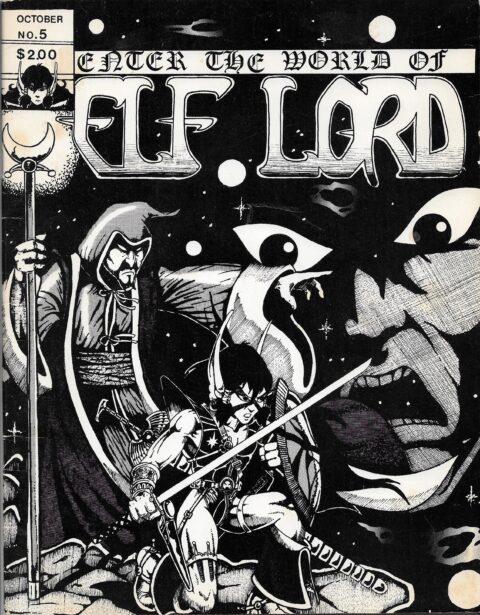
Aircel was founded by Barry Blair in 1985. Blair was already one of the most prolific comic creators in the Ottawa independent scene, having self-published several one-shot comics and long-running series using the name “Nightwynd,” beginning in 1980 with the release of his first comic, Elflord, which ran for fifteen issues until 1982. Subsequent comics released under the Nightwynd name included the one-shots Tower of Blood, Windblade and Dragonring in 1982 and a four-issue series, Samurai, in 1984. Blair had also contributed to other comics that were published around Ottawa at the time, most notably Roger Casselman’s 1982 anthology one-shot From the Void. At the time, Blair was also working as an animator on the classic Canadian children’s television program, You Can’t Do That on Television.
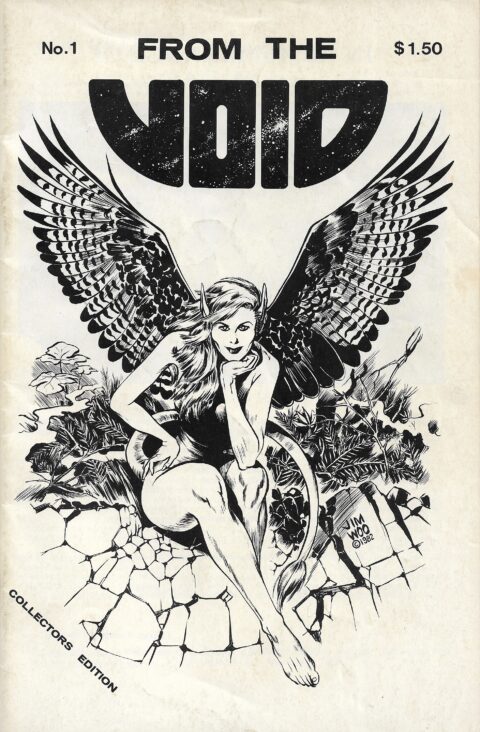
Today Blair’s self-published comics under the Nightwynd name are among the most collectible Canadian comics released during the decade. All of these comics had low print runs. For example, the first issue of Elflord had a print run of only 500 copies, while all other issues of the series were limited to only 200 copies each. I suspect that this is true for the other comics he released at the time. Indeed, finding copies of these Nightwynd releases can be a daunting and expensive task. I have yet to even find cover scans of Tower of Blood or Dragonring and can only confirm that they exist because they are included in the John Bell collection at Library and Archives Canada. Expect to pay hundreds of dollars for each comic released under the Nightwynd name (if you can find them).
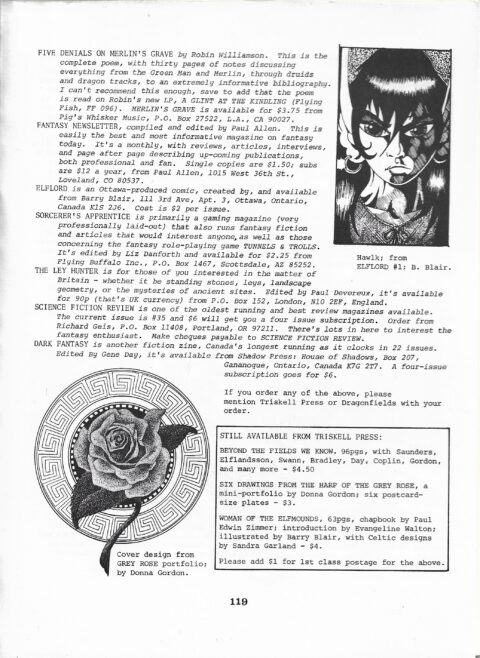
A short advertisement for the first issue of Elflord is found in issue # 3 of Dragonfields Tales of Fantasy from 1980, which was a semi-professional fantasy oriented literary magazine edited by Charles L. Saunders and Charles de Lint. The magazine was published by Triskell Press in Ottawa, Ontario. Mr. de Lint would write several issues of Warlock 5 for Aircel in the late 1980s. Image from my personal collection.
By 1985, Blair was working for Aircel, which did not start out as a comics publisher. Instead, the company was originally a manufacturer of foam insulation. However, when the company lost its government contract in 1985, Blair convinced the owner to switch to comic book publication to take advantage of the boom in black and white comics. After the company revamped, Blair became its editorial director and hired artists Guang Yap, Patrick McEown and long-time collaborator Dave Cooper. McEown would go on to win an Eisner Award in 1993 for his work with Matt Wagner on Grendel: Warchild, while Cooper would achieve critical acclaim years later for his periodical Weasel. Writer Gordon Derry fleshed out Aircel’s original roster.
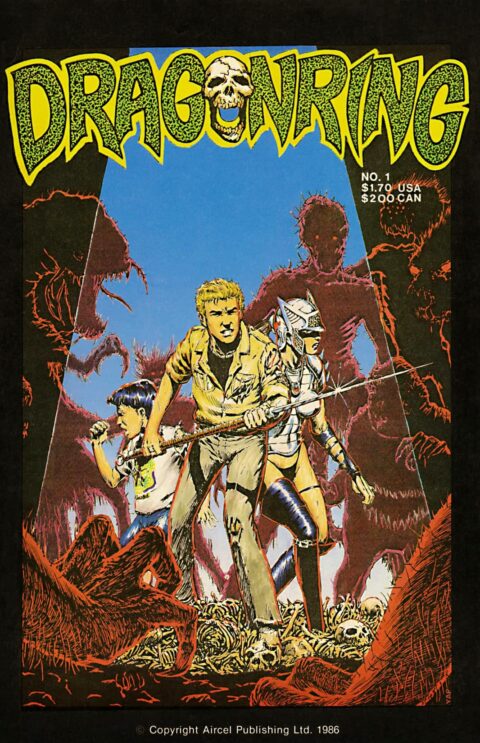
Aircel’s early comics tended to be continuations of Blair’s previously self-published material, including Elflord, Dragonring and Samurai. The latter series debuted for Aircel in 1985, while the other two debuted in 1986, with the five men mentioned above providing the bulk of material for early issues of the three series. Samurai would run for twenty-three issues until its first volume came to an end in 1987. Dragonring and Elflord would both be released as six-issue series before immediately returning with longer running second volumes. Dragonring volume 2 would last for fifteen issues, ending in 1988, while Elflord volume 2 lasted twenty-three issues (though one issue numbered “15 and a half” makes it easy to assume that the series lasted only twenty-two issues). Samurai and Elflord would return in various iterations after their original Aircel volumes ended.
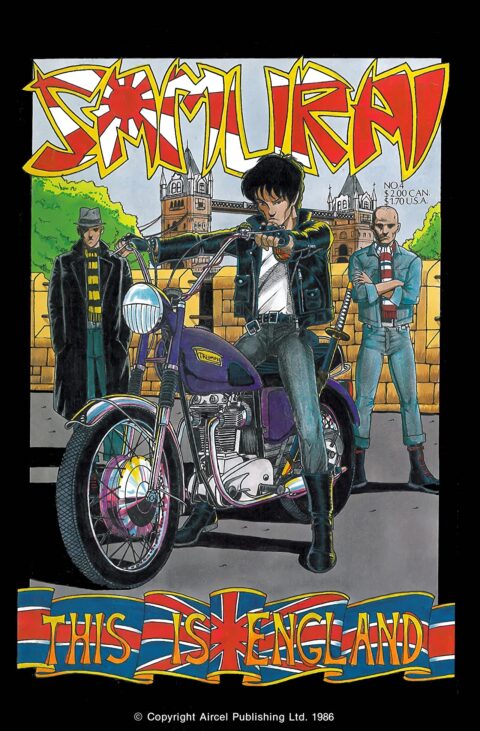
1986 also saw Aircel release three additional series that were not based on Blair’s self-published work. This included Peter Hsu, Scott Behnke and Kent Burles’ The Adventurers (which began at Aircel, but moved to Adventure Publications for its third issue), the Gordon Derry scripted science fiction series Stark: Future (which lasted for seventeen issues) and Warlock 5 (which was also written by Derry and was usually drawn by Denis Beauvais). Warlock 5 would run for fifteen issues at Aircel and would continue on with Malibu from issues 16-22.
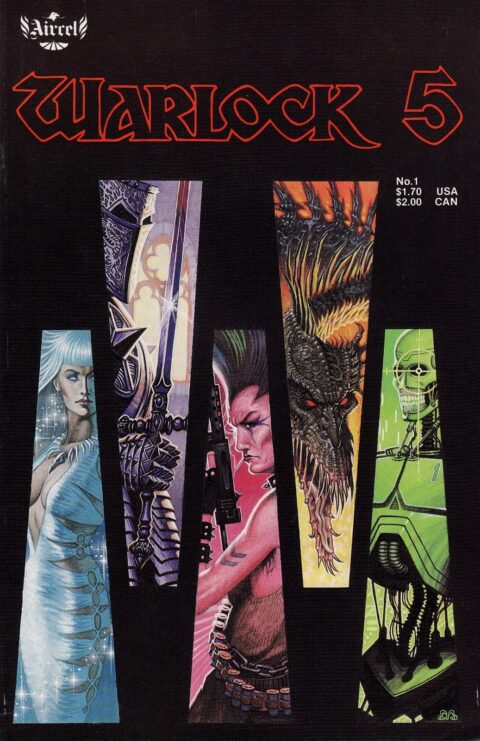
It was at this time that Aircel hired a young talent who would become one of Canada’s best-known comic book artists, Dale Keown. Keown quickly became one of the main artists on Samurai and Dragonring. In 1989, Keown moved to Marvel where he became the regular artist on The Incredible Hulk from issues # 367-398 and became a star. Keown subsequently joined Image Comics and published his series Pitt from 1993 to 1999.
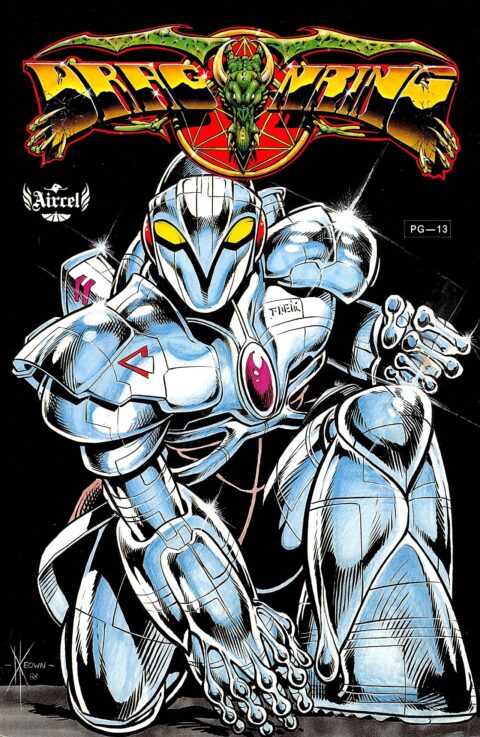
In 1987, Aircel started publishing Jim Somerville’s Maelstrom, which lasted for eleven issues. The year also saw several miniseries, including Dave Cooper’s Icarus and Gordon Derry and Adrian Kleinbergen’s Darkewood and Starstone. The one-shot Underground was also released in 1987, as was the Rob Walton series Bloodlines (which left for Vortex after issue # 3, lasting for four more issues at the rival company).
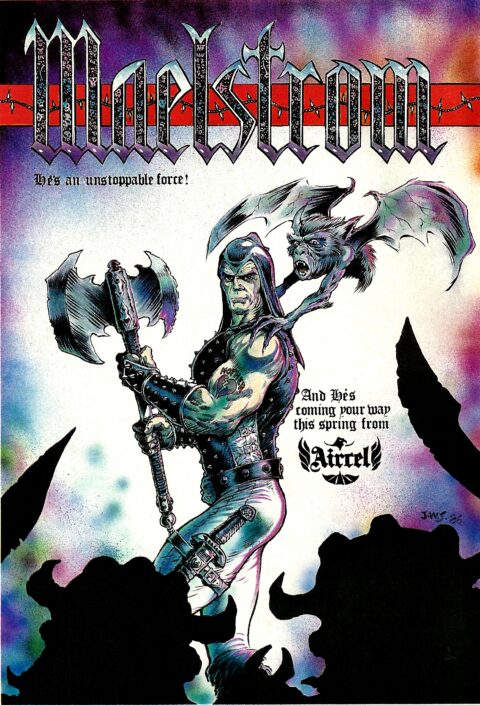
By 1988, the market for independent black and white comics had imploded and Aircel was in trouble. The company managed to release several more miniseries, but change was afoot. These new miniseries included the Elflord spinoff Greenhaven, Jake Thrash (which was planned as a three-issue series but was cancelled after two issues) and the Samurai spinoff Samurai: The Splinter and the Sword. Aircel also released the one-shots The Tale of Mya Rom and Shadowalker. The company also started two continuing series in 1988: Warlocks (which moved to Malibu after one issue and ended after issue #12) and Dragonforce (which moved to Malibu after issue # 4 and ended after issue # 13). Dragonforce continued the story of Dragonring and featured the artwork of Dale Keown until issue # 12.
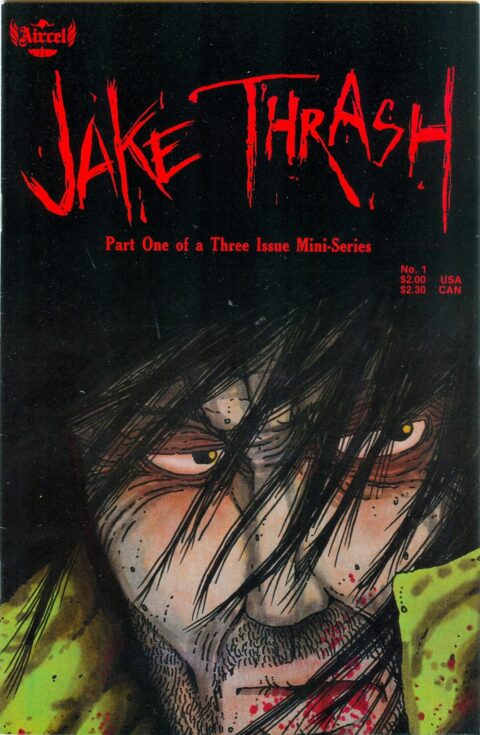
When the black and white comic market crashed, Blair’s solution was to strike a deal with Scott Mitchell Rosenberg and Malibu Comics. The idea was that the Aircel imprint and its publications would be lent to Malibu in exchange for financial assistance. This led to Aircel effectively merging with the Malibu imprint Eternity Comics and the majority of Aircel’s long-running series ending their current volumes and beginning with new volumes under different creative teams. This led to disputes of ownership of several titles. That said, several of the main Aircel creators hung around and started working on new titles for Malibu or continued to work on established titles (like Keown did with Dragonring and Dragonforce).
For example, Blair and Cooper’s four-issue series Body Count debuted in 1989. Blair’s adult-only title Leather & Lace debuted the same year, as did his superhero series Team Nippon and the follow-up series Warlock 5 Book II. Jim Somerville’s The Walking Dead was also released that year.
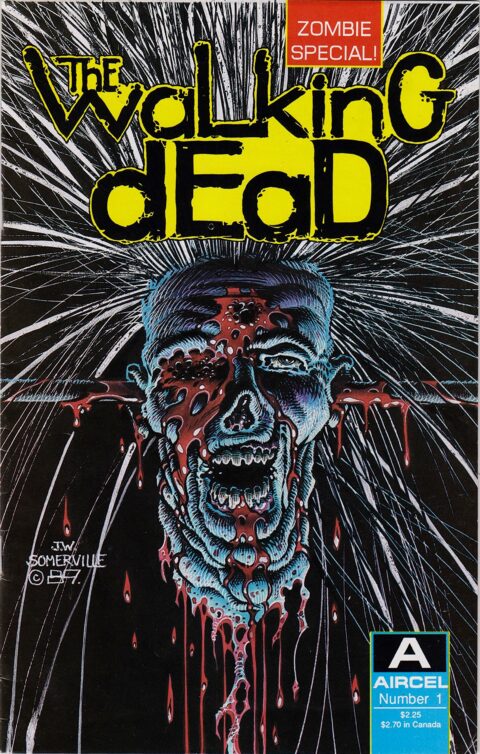
By 1990, Aircel had terminated the majority of its established titles and the imprint was essentially entirely absorbed by Malibu. For the next few years, the Aircel brand was used almost entirely for Malibu’s horror-themed and erotic titles. Blair stayed on, releasing two additional erotic series for Eternity/Malibu: Sapphire and Vampire’s Kiss. At the same time, Malibu was releasing numerous series under the Aircel name that were not connected to Blair or the original creative team. This included the 1989 series Ripper and several series that began in 1990, such as Stephen Butler’s Silver Storm, Roland Mann’s Cat & Mouse, and the Australian superhero series The Southern Squadron.
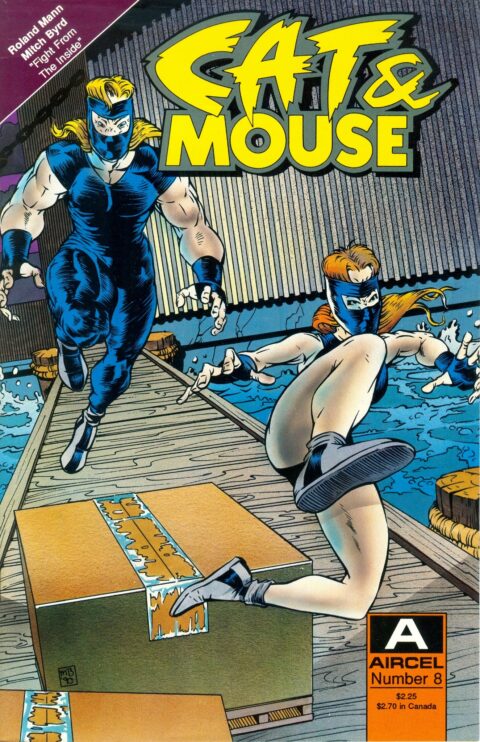
The most famous Aircel release from the post-merger era is Lowell Cunningham and Sandy Carruthers’ The Men in Black, which would be optioned by Hollywood in 1992 and would lead to four feature films, an animated series, video games and a mountain of merchandise. Today, Mr. Carruthers is something of an elder statesman of the Atlantic Canadian comic scene and he and his wife tend to make appearances at all of the comic-related events in the region. Carruthers is currently creating comics through his company, Sandstone Comics, based in Charlottetown, PEI.
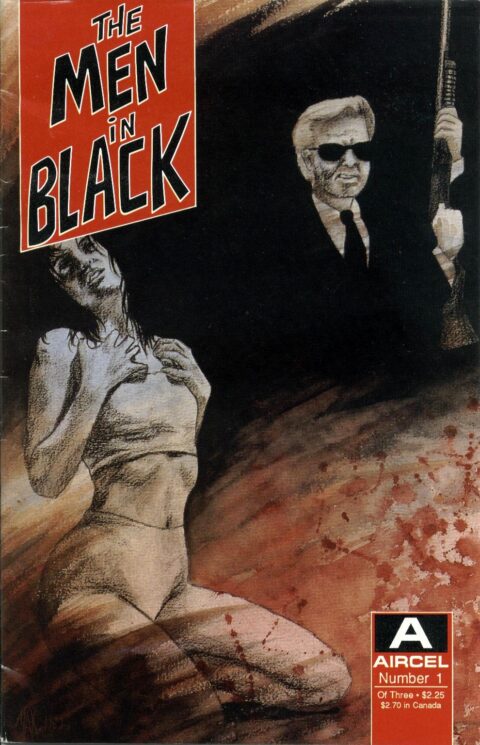
In 1991, Blair paid off his debts to Malibu and quit the company, handing over control to Malibu in the process. Aircel ceased publication in 1994 when Malibu was purchased by Marvel. In the end, Aircel only survived the end of the Canadian Silver Age in name only. The company’s production after merging with Malibu became increasingly removed from Blair’s original vision. Malibu continued to release new series under the Aircel name until 1994, but the majority of titles were erotic, adult only affairs. Nevertheless, Aircel remains one of the great Canadian comic companies of the 1980s and launched the careers of several well-known Canadian creators. Dale Keown would be inducted into the Canadian Comic Book Hall of Fame in 2019.
Blair would continue in comics after leaving Aircel and Malibu behind, most notably working on ElfQuest for WaRP Graphics. He also worked on the series Demongate under the pseudonym “Bao Lin Hum.” Eventually, he brought both Elflord and Samurai back into print, while also publishing adult graphic novels such as Sapphire, having retained the rights to his series. Blair died from a brain aneurysm in 2010 at age 55.
Strangely, Barry Blair is perhaps the most important figure from the 1980s Canadian comic industry who has not been inducted into the Canadian Comic Book Hall of Fame. When I wrote my column of armchair punditry arguing in favour of the induction of several other creators back in 2019, I had convinced myself that Blair had already been inducted. Had I recognized my mistake at the time, Blair would have been included on my list.
Blair’s work is not for everyone. His work often featured nudity and in some cases was pornographic, which became more prominent later in his career. Yet, Aircel remains one of the most important comic companies from the Canadian Silver Age because it propelled the Ottawa comic scene into national (and international) distribution. I would argue that the company was the dominant force in Canadian comics for a short time.
Next month, I will finish my look at the major Canadian comic companies from the 1980s by focusing on Matrix Graphic Series and Strawberry Jam. Neither of these companies comes close to the output of the “big three” that I have profiled during the past two months, but their stories are significant parts of the Canadian Silver Age.
Thanks for continuing to support my research by reading Forgotten Silver. See you next month. Cheers, Dr. brian Campbell

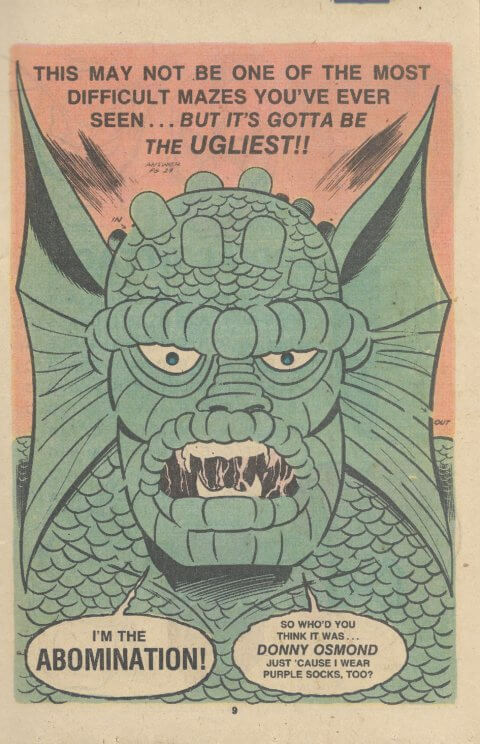
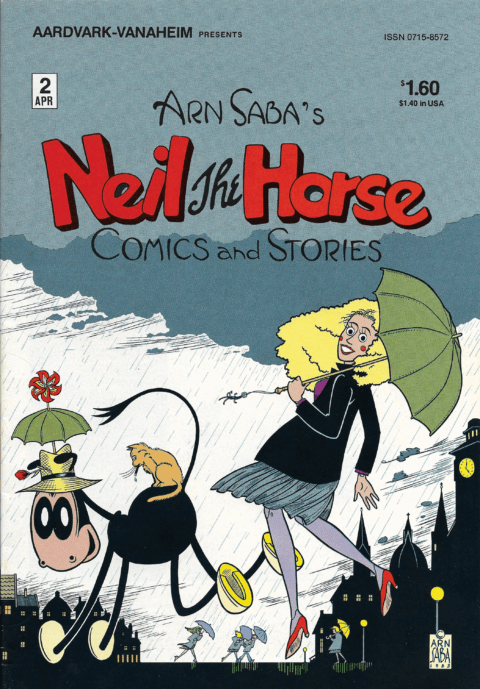
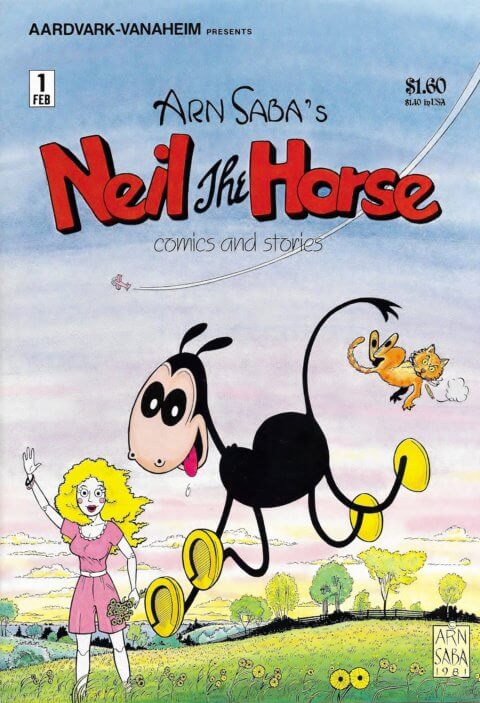
Great work, Brian. Man, so much happened here that I have either forgotten or never knew. Those early titles, I handled as both distributor and retailer in the 80s. It’s amazing some had such long runs. But once I sold my distribution portion of yhe business to Diamond, in July 1988, I continued with just fanzines, books and the occasional Underground-type comic or independent. I stopped handling most other now-mainstream comics.
McKeown, Barry Blair (sad to hear of his death), busy guys. Samurai, Dragon Ring, Elflord, even From The Void, are all very familiar from my distributor days. I kept handling the adult titlles after 1988, since these were an outgrowth of undergound comics and part of my line.
If you have any of my old retail catalogs from the eighties, they would list many of these books, even the short run titles you mention, since we tried to carry all the independents. We had a great relationship with Deni Loubert and Aardvark/Vanaheim, later Renegade, and kept all their back issues in stock along with oerrenial sellers like Cerebus and Elfquest.
But after 1988, Walking Dead, even Men in Black, they were not on my radar any more. I was suprised seeing Men in Black the film, when I saw Malibu was reponsible. In the 80s, Malibu and Scott’s reputation was marginal, to be kind. Its so long ago now I can’t quickly recall any details. I recall he came into the business with deep pockets from family money, but if memory serves me, ended up stiffing people with far less ability be survive financial losses. I have seen his name turn up as producer on other films since then.
Malibu was in LA. I had a distribution warehouse there, which Diamond absorbed in ‘88. I remember their place there and I think I stopped working with them due to the afformentioned problems.
Bud,
Thanks for your comments. My apologies for not realizing until this that you had also commented on last months article. Something that has long fascinated me about the short-lived boom of Canadian comics during the 1980s is that a handful of distributors in Canada and the USA (yourself included) played such a large role in getting these titles into comic shops. Obviously, this is not exclusive to Canadian titles, but it is hard to imagine that any of these independent black and white titles would have found readership outside of their home cities or regions without people such as yourself expanding the markets and meeting the burgeoning demand.
I also find it quite interesting that the people behind companies like Aardvark-Vanaheim, Vortex, Aircel and Renegade were as busy as they are. I do not consider Renegade to be a Canadian company for obvious reasons, but that does not negate the fact that Deni Loubert’s move stateside is part of the larger picture and continuity of the scene. That said, comics released by Aardvark-Vanaheim, Vortex and Aircel make up (and I am spitballing here) a third or more of all of the comics published in Canada during the entire Canadian Silver Age. Busy indeed.
I am not well-versed enough in the history of Malibu (beyond its relationship with Aircel) to comment on problems you mention. I will have to do some deeper reading to learn more about the subject.
I actually do not have any of your old catalogues. I love picking this sort of material up when I can, though, as the information contained within can add insight into the era. If you still have any floating around, don’t hesitate to send me images through Facebook (https://www.facebook.com/EastCoastToysandGames/) or via email ([email protected]). No rush, of course!
Cheers,
brian
Keown’s cover of Dragonring vol.2 #15 reminds me of John Brynes character from the back pages of Charlton’s E-Man.
You must be referring to Rog-2000, Gerald. If so, I can definitely see some similarities.
Very nice article, Brian.
I worked closely with Barry Blair when Aircel was at Malibu Comics. He was both a good friend (and stayed at my place whenever he was in town), and incredibly talented. We were very supportive of him when he wanted to break out on his own after Aircel, and I was and still am saddened at world’s loss of him when he passed in 2010.
I, too, am surprised he was never inducted into the Canadian Comic Book Hall of Fame.
By the way, one minor correction for your article was that RIPPER was indeed created and done by Barry.
Keep up the good work, and all my best,
Scott
Brian, I recently sorted out my old catalogs and kept several sets for posterity. I’ll run through my extras and would be happy to send them up to you assuming they can be of help. Or if you prefer scans, let me know.
Exactly what years you would like to see? And send me your address. Gratis, happy to have them go to a good home.
Scott, thanks for reaching out. I am glad that you enjoyed this article and appreciate your kind words. Also, thank you for offering the correction regarding Ripper. I do not have any issues of the series on hand and will correct this in my notes.
I hope that Mr. Blair’s work will begin to receive the renewed attention that it deserves from the Canadian comic community and comic collectors in general.
Cheers, brian
Bud, thank you for offering to do this. I would prefer not to share my address in the comments section. Please contact me via email or through Facebook. Thanks, brian
Should anyone want to get in on the ground floor of the Aircel Boom (perhaps) or fill in Aircel runs, a seller friend of mine in Kelowna, B.C. is unearthing quite a bunch of Aircel’s from the long box stock he bought a couple of years ago.
Such as this-
https://www.ebay.ca/itm/The-Adventurers-1-1986-Aircel-Comics/233890130544?_trksid=p2485497.m4902.l9144
cheers!